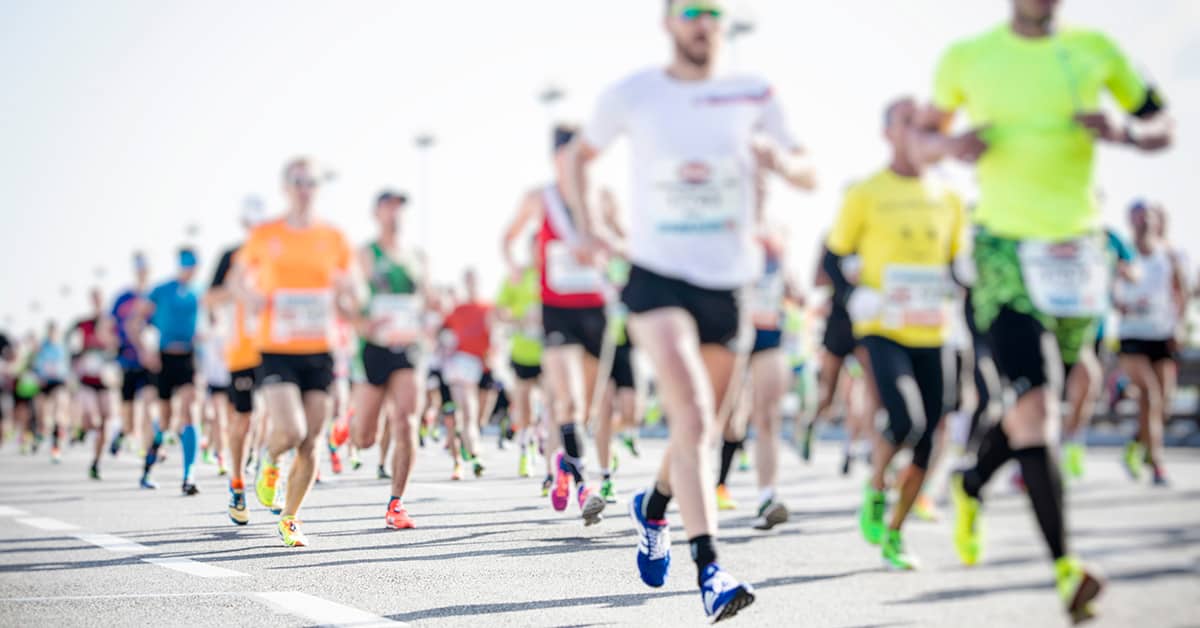Best Practices for Long Run Recovery
Your long run can only be as good as your recovery. Once your run ends the real work begins to ensure your body can recover quickly and healthily. By following these practical long-run recovery tips, you will be back on the road, track, or trail in no time!
Cool It Down
The first step in your recovery should always be a cooldown. While it can be tempting to immediately move on to the next task on your daily to-do list, it is critical to give your body plenty of time to cool down, especially after a long run.
Try slow jogging or brisk walking for 5-10 minutes after the end of your run. This will help bring your heart rate down and return your breathing back to normal. Taking on a slower pace also aids in getting your body back to its pre-run self. Allowing time to cool down also provides you time to unwind and reflect on your run which is an important ritual in any training plan.
Don’t Skimp on Stretching
Stretching is critical in helping your body recover after a long run. It is no secret that runs lasting over 1, 2, or even 3 hours can take a toll on your legs. A great stretch, to begin with, is propping your legs up against a wall. This pose promotes proper circulation by returning any blood that pooled in your legs during your run back to your heart. Try and hold this stretch for 5-10 minutes to get the most out of your recovery.
After you are finished, immediately move on to the main muscle groups in your legs, making sure to focus on one group at a time. Take some deep breaths as you move deeper into each stretch and then repeat on the opposite leg. Focusing on your breathing during stretching will connect you back to your body and allow your mind some time to refresh as well.
Clean Up
After you finish stretching your muscles it is time to recover with a shower or bath. While showering may seem like a no-brainer after a long run, choose the temperature of your shower or bath wisely to accelerate the recovery of your entire body. Set your shower at a chilly to cold temperature to help reduce inflammation in your legs and other muscles.
Though not for everyone, an ice bath may also promote muscle recovery and reduce soreness, but certainly can serve as a shock to your system. For those not so interested in cold showers or ice baths, aim to reduce the temperature of your hot shower right before you hop out. This will still provide your muscles with a shock of cold water without the commitment to an entire frigid shower or bath.
Prioritize Hydration
Especially during hotter months, you should prioritize your hydration before, during, and after your long run. Ingesting adequate amounts of water will ease soreness and ensure that your body is properly replenished. A good rule of thumb is to drink 16-24 ounces of water for every pound lost during your run.
In addition to downing water, your long-run recovery should include replenishing electrolytes. Electrolytes are minerals found in your body that are lost during exercise, especially during long runs. While Gatorade and other sports drinks claim to refuel your electrolytes quickly, the high amounts of sugar in those sports drinks can often have a negative effect on your re-hydration. Instead, skip the sugary sports drinks and opt for coconut water or other electrolyte drinks low in sugar and carbohydrates such as Nuun or Tailwind Nutrition.
Feed Your Recovery
It is no secret that long runs require a lot of fuel and energy. Once you have adequately cooled down, stretched, and rehydrated, it is time to replenish your body with a good healthy recovery meal. What you eat after a long run will encourage your body to rebuild muscle, restore energy, and heal quickly. How much you eat will largely depend on the length and intensity of your run.
For long runs lasting longer than 75 minutes, aim to have a balanced plate of 50% carbohydrates, 25% protein, and 25% color. Carbohydrates are essential in helping replenish energy stores within your body. Protein is crucial for muscle repair and will help strengthen your body and get you back to running sooner.
Consuming colorful fruits and vegetables will ensure that you are nourishing your body with a mix of vitamins and minerals as well as healthy fats and fiber.
While there is no magic formula or one-size-fits-all meal that will get you recovered and back to running sooner, strive to fuel your body healthily instead of reaching for sugary or processed foods.
Keep Moving
After a long run, it can be very enticing to lay down for a nap and relax for the rest of the day. While your body certainly needs proper rest in order to recover, try to stay moving as much as possible. After you have refueled with hydration and a good meal, consider spending some time foam rolling. Foam rolling is low-impact and helps to release sore, tight muscles. Targeting your leg muscles for even as little as 5-10 minutes can have significant benefits in helping your body recover. RELATED: What Happens When you Foam Roll?
In addition to foam rolling, lace up your shoes and head out for a walk. Walking will keep the blood flowing and can improve your overall energy levels. In your free time, continue stretching your legs and hips to prevent any stiffness or day-after pain.
In the days that follow your long run, incorporate cross-training to supplement your running routine. Cross-training can be a great way to help your body recover while staying active. Some great examples of cross-training can be cycling, swimming, and yoga. All of these activities are low impact, which is great for your body as running, especially for long periods, is very high impact.
Challenge yourself to try something new during your recovery or complete your favorite cross-training activity. These non-running activities will help you stay healthy and get you back to running sooner.
A Training Plan that Works for You.
Our collection of running plans will help you train year-round. From 5k to a 100-mile ultramarathon, we have a training plan built for your experience level and goals. Every plan is delivered via Final Surge, allowing you to sync workouts across devices, receive daily reminders of workouts and activities, and analyze workout and target zone details. Get started today with a training plan built for you, view our running plans here.









